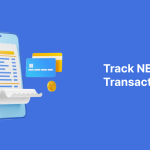In India, NEFT (National Electronic Funds Transfer) has become one of the most common and trusted ways to transfer money between bank accounts. Whether you’re paying a vendor, clearing utility bills, or managing payroll, NEFT makes the process simple for both individuals and businesses.
Each NEFT transaction, however, comes with a Unique Transaction Reference number, known as a UTR. Understanding what this number means is important for tracking and verifying your payments.
In this blog, we’ll break down what an NEFT UTR number is, how it works, and why it’s such an important part of banking transactions.
What Is NEFT?
NEFT is an electronic payment system in India that lets people and businesses transfer money from one bank account to another securely. It’s a key part of India’s banking infrastructure and ensures smooth, hassle-free fund transfers.
Unlike older methods like cheques or demand drafts, NEFT is fully electronic, making it faster and more efficient. It’s widely used for personal and business payments, from paying bills and sending money to vendors to processing salaries.
NEFT runs on a deferred net settlement basis, meaning all transactions are processed in batches and settled by the end of the day. This makes it ideal for payments where immediate transfer isn’t required.
Here’s how it compares with other payment systems:
- NEFT: Works in batches and doesn’t have a minimum or maximum transfer limit.
- IMPS: Allows instant payments, suitable for small and urgent transfers.
- RTGS: Used for large-value transactions that need real-time settlement.
Common uses of NEFT include:
- Paying utility bills (electricity, water, etc.)
- Vendor and supplier payments
- Salary transfers
- Loan repayments
What Is a UTR Number?
The UTR (Unique Transaction Reference) number is a special code assigned to every NEFT transaction. It acts like a digital fingerprint for that specific payment, helping both the sender and receiver track and verify it.
When you complete an NEFT transfer, the system automatically generates a UTR number linked to the transaction. This number is useful for tracking payment status, confirming completion, and resolving any transfer issues.
Key functions of a UTR number:
- It uniquely identifies your transaction.
- It allows you and the recipient to track the payment’s status.
- It confirms that the transfer has been completed successfully.
Format of an NEFT UTR Number
An NEFT UTR number follows a structured format that provides key details about the transaction. Here’s how it’s typically arranged:
- Bank Code: Identifies the bank handling the transfer.
- Date: Shows when the transaction took place.
- Transaction Number: A unique code for that specific transaction in the batch.
For example, a UTR number may look like: NEFT001234567890123. This number can be used to track and confirm the transaction.
The differences between NEFT, RTGS, and IMPS UTR numbers:
- NEFT UTR: Used for batch-processed transactions.
- RTGS UTR: Used for high-value payments that settle instantly.
- IMPS UTR: Used for real-time small transfers.
Why the UTR Number Matters?
The UTR number plays a major role in ensuring secure and transparent transactions. Here’s why it’s so important:
- Proof of Payment: The UTR number serves as proof that your payment was completed. If someone questions a transaction, this number helps verify it.
- Tracking Delayed or Failed Transactions: If your transfer is delayed or fails, the UTR helps the bank trace the transaction and find the issue quickly.
- Accounting and Reconciliation: Businesses and individuals use UTR numbers to maintain accurate financial records. It’s especially useful for bookkeeping, audits, and reports.
- Dispute Resolution: If a payment doesn’t go through as expected, you’ll need the UTR when raising a dispute. It helps banks locate and resolve issues faster.
How to Find the UTR Number?
Finding your UTR number is simple. You can check it through any of the following ways:
- Payment Confirmation Message or Receipt: After completing an NEFT transfer, your bank will send an SMS or email confirmation that includes the UTR number.
- Bank Statement or Transaction History: You can view the UTR in your transaction history or account statement, either through online banking or your mobile app.
- Contacting Customer Care: If you can’t locate it, reach out to your bank’s customer care team, and they’ll help you retrieve the UTR.
Tracking a Transaction Using the UTR Number
Once you have the UTR, you can easily track the status of your NEFT payment:
- Bank Portals or Customer Service: Most banks allow you to track NEFT transactions online. Enter your UTR number to check the payment status, or contact customer care for help.
- Timeframes for NEFT Settlements: NEFT works in half-hour batches. If your transaction is part of an early batch, it usually reflects within a few hours. Transfers made later in the day may take longer. All funds are typically settled by the end of the banking day.
Common Issues and How the UTR Helps
Even though NEFT is reliable, you might sometimes face issues. The UTR number can help solve most of them.
- Payment Pending or Delayed: If your payment hasn’t gone through yet, use the UTR to check its progress. Banks can identify delays and take action faster.
- Duplicate or Failed Transactions: If a transaction fails or appears twice, share the UTR with your bank to trace and fix the issue or request a reversal.
- Beneficiary Not Receiving Funds: If the recipient doesn’t get the money, the UTR number helps confirm whether the payment was successful and locate the issue.
Tips for Managing NEFT Transactions Efficiently
To make your NEFT experience smoother and error-free, follow these simple tips:
- Always save your UTR number: Keep it handy after every transfer for easy reference.
- Double-check beneficiary details: Make sure the account number and IFSC code are correct before transferring funds.
- Use online banking: It helps you access your transaction history and UTR numbers anytime.
- Contact your bank quickly: If a payment fails or stays pending, report it immediately to get a faster resolution.
Best Practices for Secure NEFT Transactions
To keep your NEFT transfers safe and error-free:
- Verify Beneficiary Details before sending money.
- Enable Two-Factor Authentication (2FA) for added security.
- Use Secure Channels and avoid public Wi-Fi for banking.
- Monitor Transactions Regularly to spot any suspicious activity early.
Future of NEFT and UTR in India’s Payment System
As digital payments in India continue to evolve, NEFT is expected to become even more efficient. On February 29, 2024, NEFT hit a new record by processing 41 million transactions in a single day, showing just how widely it’s used across India.
In 2024–25, India’s digital payment systems saw a 34.8% jump in transaction volumes, largely driven by platforms like RTGS and NEFT.
With ongoing upgrades and integration with real-time systems, both NEFT and UTR numbers will play a stronger role in ensuring faster, safer, and more transparent transactions.
Conclusion
The NEFT UTR number is an important part of India’s digital payment system. It ensures your transactions are traceable, transparent, and secure. By understanding what a UTR number is and how it works, you can track payments easily, resolve issues quickly, and maintain accurate records.
So next time you make an NEFT transfer, save that UTR number; it’s your proof of payment and the easiest way to ensure your money reaches the right place safely.






